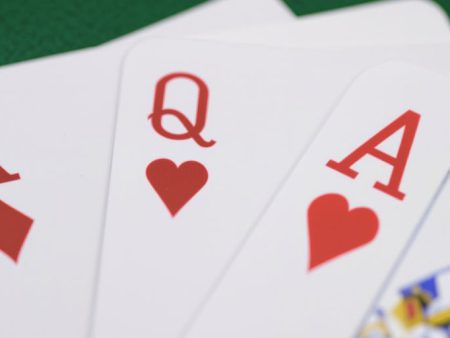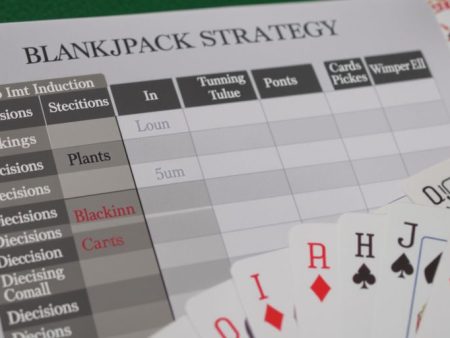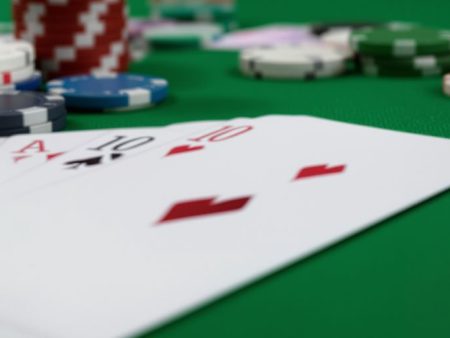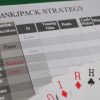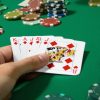Blackjack is one of the most popular casino games, offering players a rare opportunity to use strategy to reduce the house edge.
Unlike pure games of chance, blackjack requires decision-making based on probability, making it possible to improve results with the right approach.
Learning how to win at blackjack involves more than knowing when to hit or stand—it requires understanding the rules, using mathematical strategies, and managing funds wisely.
Whether playing online blackjack for real money or at a live casino, developing a solid plan can significantly impact long-term success.
Understanding Basic Strategy: How to Win at Blackjack
Every successful player starts with a basic strategy, which outlines the statistically correct decision for every possible hand combination. Following a strategy chart can drastically lower the house edge, bringing it close to 0.5% in many cases.
Mastering how to win at blackjack begins with memorizing and applying these decisions consistently.
Since the dealer must follow strict rules—hitting on 16 or less and standing on 17 or higher—players can adjust their moves accordingly to maximize potential wins.
The House Edge: Why It Exists and How to Minimize It
Casinos maintain a built-in advantage in every game (the house edge, as mentioned before), but blackjack provides an opportunity to shrink that advantage. Before shrinking, it’s important to know exactly why the house edge exists.
The dealer acts last, meaning players can bust before the dealer even plays their hand. However, using optimal strategy and making mathematically sound decisions can lower this advantage to one of the smallest in any casino game.
Choosing tables with favourable rules, such as 3:2 payouts for blackjack and the dealer standing on soft 17, helps further reduce the house’s edge.
Online vs. Live Blackjack: Adjusting Strategies for Different Formats
Blackjack plays differently depending on whether it is online or at a physical casino. Understanding how to win at blackjack means adapting strategies to each format. In live casinos, players can observe the dealer’s behaviour, card penetration, and betting habits of others.
Card counting is ineffective online due to automatic shuffling, but players can take advantage of bonuses, lower table minimums, and the ability to play multiple hands quickly. Adjusting gameplay according to where you are playing and whether the setting is virtual guarantees the best possible approach in any setting.
Card Counting: Tracking High and Low Cards for an Advantage
One of the most well-known techniques for gaining an edge is card counting. While not illegal, casinos discourage it and may ask skilled players to leave.
The premise behind how to win at blackjack through card counting is simple: tracking high and low cards to determine when the deck is in the player’s favour. A deck rich in face cards and aces benefits the player, increasing the chances of hitting blackjack or forcing the dealer to bust.
While challenging to master, a basic counting system like Hi-Lo can help players make better betting decisions.
Choosing the Right Table
Not all blackjack tables are created equal. Players looking to win at blackjack should carefully examine table rules before sitting down.
The best tables offer 3:2 payouts for blackjack, allow doubling down on any two cards, permit resplitting, and have the dealer stand on soft 17.
Avoiding 6:5 payout tables, which increase the house edge significantly, is essential for long-term success.
Choosing a favourable table gives players the best chance of walking away with winnings.
Choosing When to Hit, Stand, or Surrender
Every hand requires a calculated decision based on probability. Learning how to win at blackjack involves knowing when to hit, stand, or surrender.
Players should always hit when holding 12-16 against a dealer’s strong upcard, while standing is best when holding 17 or higher against weaker dealer cards.
Surrendering is an option when facing an unfavourable situation, such as a 16 against a dealer’s 10, and it helps minimize losses in the long run.
Choosing to Maximize Opportunities with Pair Splitting
Pair splitting can increase winning potential but must be done wisely. A crucial part of how to win at blackjack is knowing which pairs to split and which to keep together.
Splitting aces and eights is always recommended, as it provides the best chance of improving the hand. However, splitting tens is a mistake, as 20 is already a strong total.
Understanding when to split ensures better odds and maximizes favourable situations.
Doubling Down: Timing Your Aggressive Moves for Maximum Impact
Doubling down allows players to increase their bet in strong positions, leading to higher payouts.
A key part of winning at blackjack is recognizing the right moments to double down. The best times include holding 11 against a weak dealer upcard or a 10 when the dealer shows 9 or lower.
Some variations allow doubling after splitting, increasing winning opportunities when used correctly.
The Insurance Bet: Why It’s Almost Always a Bad Idea
One of the biggest mistakes players make is taking the insurance bet.
Learning how to win at blackjack means avoiding unnecessary side bets that benefit the house. The insurance bet pays 2:1 if the dealer has blackjack, but the long-term odds make it a losing proposition.
Insurance is rarely a wise choice unless card counting confirms an unusually high number of aces remaining in the deck.
The Dealer’s Upcard and How It Dictates Your Next Move
The dealer’s upcard is one of the most critical factors in decision-making. Mastering how to win at blackjack means reacting appropriately to what the dealer is showing.
Weak dealer cards (2-6) put the player in a stronger position, allowing for more aggressive moves such as doubling down and standing on lower totals.
Strong dealer cards (7-A) require more caution, making hitting or surrendering the better choice in some situations.
Staying Emotionally Neutral During Losing Streaks
Emotional control is a major part of how to win at blackjack. Losing streaks are inevitable, but players who go on tilt—playing recklessly due to frustration—often make poor decisions.
Staying disciplined, following strategy, and walking away when necessary prevent emotions from overriding logical gameplay.
The best players understand that variance is part of the game and never chase losses with impulsive bets.
Protecting Your Funds While Chasing Wins
Proper money management is one of the most overlooked aspects of how to win at blackjack.
Setting limits, choosing appropriate bet sizes, and knowing when to stop playing are crucial for longevity.
A common rule is to never bet more than 5% of the total bankroll on a single hand. Having a clear plan ensures players can withstand losing streaks while capitalizing on winning sessions.
Practice Makes Perfect: Simulators and Free Games to Hone Your Skill
Blackjack is one of the few casino games where skill plays a role, making practice essential.
Many online platforms offer free blackjack games, allowing players to test strategies without risking real money.
Simulators help refine decision-making, while strategy trainers highlight mistakes and provide feedback. Studying how to win at blackjack through consistent practice builds confidence and improves long-term results.
Experience and knowledge separate skilled blackjack players from casual gamblers. Players can increase their chances of success by following basic strategies, choosing the right tables, and managing funds wisely.
While luck plays a role in short-term results, intelligent decision-making and disciplined play create the best path to winning over time.
